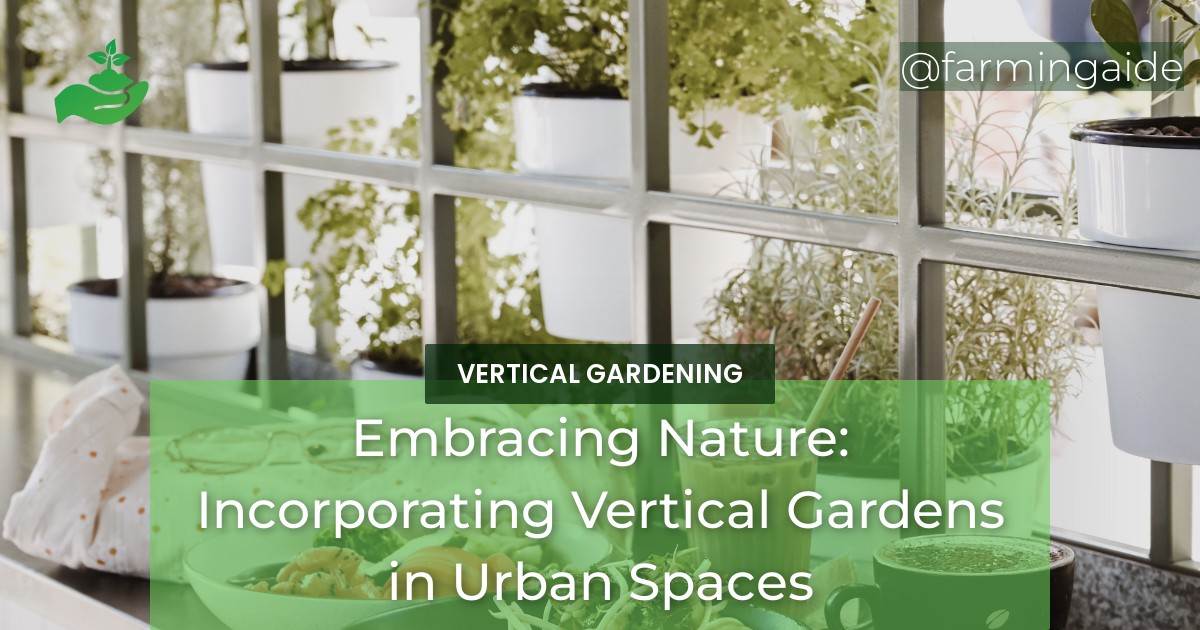How Can Optimizing Sunlight in Vertical Gardens Benefit Urban Spaces?
By optimizing sunlight for gardens in vertical spaces, urban areas can benefit from improved air quality, reduced energy consumption, and increased food production. The efficient use of natural light allows for more plants to thrive, creating a healthier and more sustainable environment for city dwellers.
Embracing Nature: Incorporating Vertical Gardens in Urban Spaces
As cities continue to expand, green spaces in cities are becoming increasingly important. Urban areas are often characterized by the lack of greenery, which can negatively impact the environment and the quality of life of city dwellers. However, there is a solution to this problem: urban vertical gardening. This gardening method is a relatively new trend that is gaining popularity in many cities worldwide. In this article, we will explore the benefits of vertical gardens, the installation of public and private vertical gardens, and community engagement in urban vertical gardening initiatives.
Benefits of Vertical Gardens in Urban Environments
Urban vertical gardening has many benefits, including:
Air Quality Improvement
Vertical gardens help to purify the air in urban areas by absorbing pollutants and emitting oxygen. Plants are natural air filters and can help to reduce the levels of harmful chemicals in the air, such as carbon monoxide, nitrogen dioxide, and sulfur dioxide.
Temperature Regulation
Vertical gardens help to regulate the temperature in urban areas by providing shade and reducing the urban heat island effect. The urban heat island effect is a phenomenon where cities are hotter than surrounding rural areas due to the absorption of heat by buildings and pavement.
Noise Reduction
Vertical gardens help to reduce noise pollution in urban areas by absorbing sound waves. Plants are natural sound absorbers and can help to reduce noise levels by up to 8 decibels.
Aesthetics and Well-Being
Vertical gardens add beauty to urban areas and can have a positive impact on mental health. Studies have shown that exposure to green spaces can reduce stress levels and improve overall well-being.
Vertical Garden Installations in Public Spaces
Vertical gardens can be installed in many public spaces, including:
City Parks and Plazas
Vertical gardens can be installed in city parks and plazas to add greenery and beauty to these spaces. Vertical gardens can also be used to create living walls and screens to provide privacy and shade.
Office Buildings
Vertical gardens can be installed in office buildings to improve air quality and aesthetics. Vertical gardens can also help to reduce stress levels and improve employee productivity.
Retail Centers
Vertical gardens can be installed in retail centers to create a unique shopping experience and improve the overall aesthetics of the space.
Schools and Universities
Vertical gardens can be installed in schools and universities to provide educational opportunities for students and to improve the aesthetics of the space.
Rooftop and Balcony Vertical Gardens
Vertical gardens can also be installed on rooftops and balconies of both residential and commercial buildings. However, there are some maintenance considerations to keep in mind:
Residential Buildings
- Vertical gardens can provide fresh produce for residents to enjoy.
- Regular maintenance is required to ensure the longevity of the garden.
- Watering and fertilizing schedules must be maintained to ensure the health of the plants.
Commercial Buildings
- Vertical gardens can add to the aesthetics of the building and improve air quality.
- Regular maintenance is required to ensure the longevity of the garden.
- Watering and fertilizing schedules must be maintained to ensure the health of the plants.
Collaboration Opportunities for Urban Vertical Gardens
Collaboration is key to the success of urban vertical gardening initiatives. There are several opportunities for collaboration:
Local Businesses and Organizations
Local businesses and organizations can provide funding and resources for urban vertical gardening initiatives. They can also provide volunteers for maintenance and education programs.
Governmental Agencies and Non-Profits
Governmental agencies and non-profits can provide funding and resources for urban vertical gardening initiatives. They can also provide education and outreach programs for the community.
Urban Design Firms and Architects
Urban design firms and architects can provide expertise in urban garden design. They can help to design and install vertical gardens in public spaces and provide education on the benefits of vertical gardening.
Community Engagement in Urban Vertical Gardening Initiatives
Community engagement is essential to the success of urban vertical gardening initiatives. There are several ways to engage the community:
Education and Outreach Programs
Education and outreach programs can be used to inform the community about the benefits of vertical gardening and provide education on how to maintain a vertical garden.
Volunteer Opportunities
Volunteer opportunities can be used to engage the community in the maintenance of vertical gardens. Volunteers can help to water and fertilize the plants and provide general maintenance.
Social Media and Marketing Strategies
Social media and marketing strategies can be used to promote urban vertical gardening initiatives and engage the community. Social media platforms can be used to share information and photos of vertical gardens and to promote events and volunteer opportunities.
Conclusion
Urban vertical gardening is a relatively new trend that is gaining popularity in many cities worldwide. Vertical gardens have many benefits, including improving air quality, regulating temperature, reducing noise pollution, and improving aesthetics and well-being. Vertical gardens can be installed in public and private spaces, and there are many opportunities for collaboration and community engagement. By embracing nature and incorporating vertical gardens in urban spaces, we can improve the quality of life for city dwellers and create a more sustainable future.
RELATED ARTICLES:


